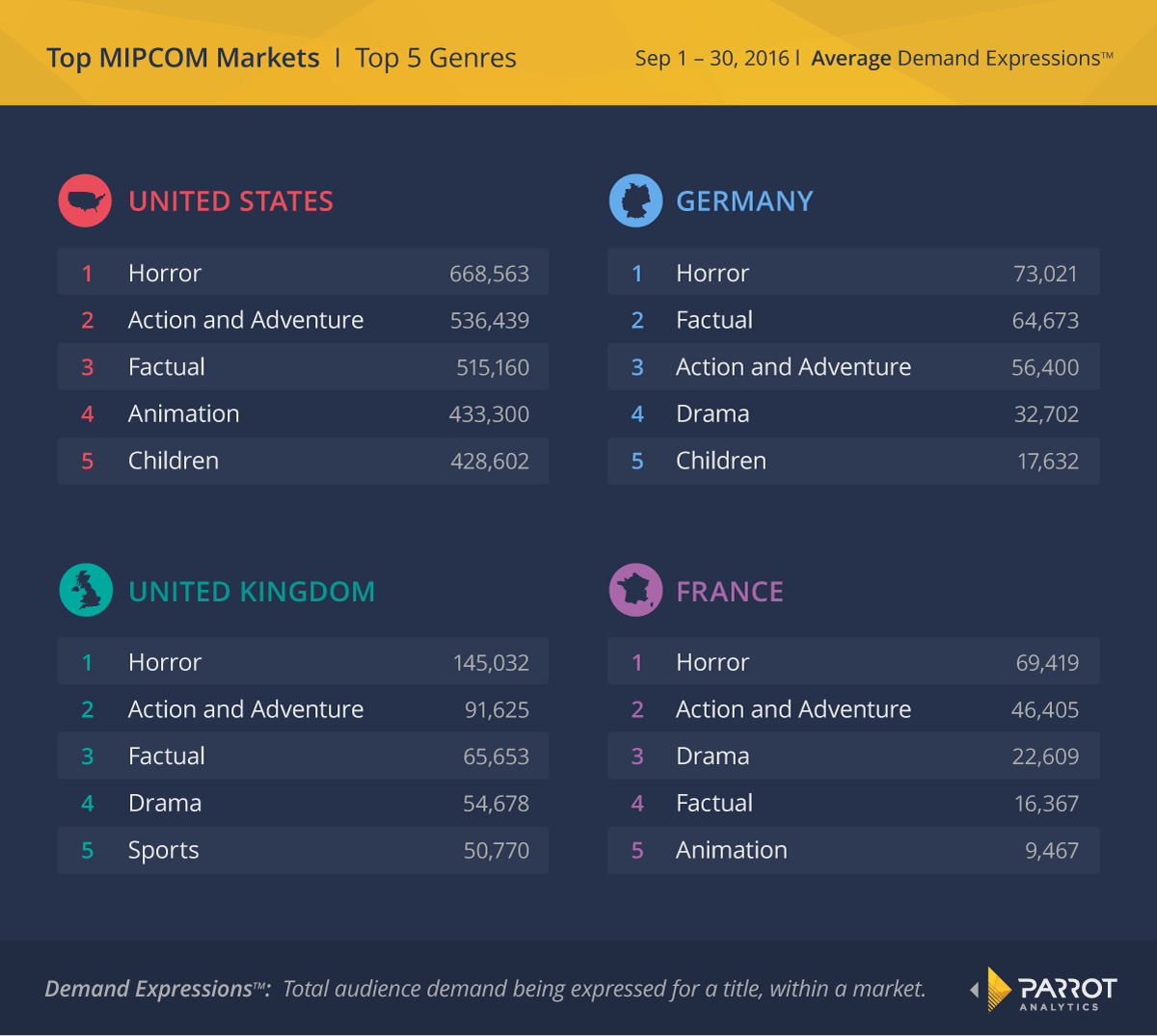One of the major industry events, MIPCOM, is happening in a week. Content buyers and sellers will converge in France to do business, discovering the next hit in their market and pitching their latest productions. With many international markets represented, a universal measure such as Demand Expressions™ enables fair comparisons of content to be made across countries and platforms. In this analysis, we take a look at four key buyers markets at MIPCOM to determine the most popular genres in each.
The top five genres by total demand during the month of September were found for the four markets: the United States, the United Kingdom, Germany, and France.

Drama and comedy naturally rule, as most content produced belongs to one of those two major categories. Reality and action/adventure also ranks highly in all four markets; children’s content is popular as well, but France has more demand for horror titles. The share of demand by genre reflects the most popular content in terms of volume, so it is not unusual to find that the markets have very similar preferences.
Instead of summing the Demand Expressions™ for each genre, we now find their average demand in order to reveal the types of shows which tend to be most popular, regardless of volume.

While horror titles are less common than dramas or comedies, they top the list in all four markets in terms of average demand. Factual and action/adventure also have relatively few titles yet rank highly in these countries. In contrast, the most crowded genre, drama, has less than half the average demand of the top genres, only ranking third or fourth (and not at all in the United States). A few regional difference emerge: the United Kingdom likes sports-related shows, while the US and France prefer animated series instead.
Content buyers can use this type of demand analysis to acquire the type of content that will be most popular in their market, while content sellers can target their content towards popular but under-utilized genres such as horror. Though many markets share common trends, the differences can reveal new opportunities that both parties can use to make data-driven decisions.

